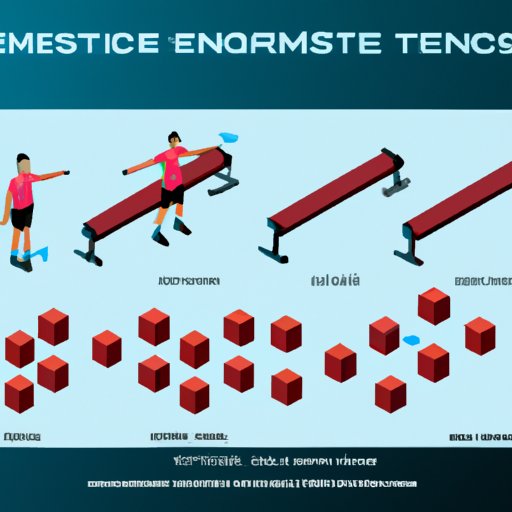Introduction
Isometric exercises, also known as static strength training, are a type of strength training in which you hold your body or limbs in a certain position for a period of time. These exercises are designed to increase your muscle strength and endurance without having to move your joints through a full range of motion.
Definition of Isometric Exercise
Isometric exercises involve contracting your muscles without actually moving the joint involved. For example, when doing a wall squat, you would stand with your back against the wall and then lower yourself into a squat position while holding that position for a period of time. This is an example of an isometric exercise because you are not actually moving your joints but rather maintaining a static position.
Benefits of Isometric Exercises
Isometric exercises can be beneficial for individuals of all fitness levels since they do not require much equipment and can be done almost anywhere. Additionally, these exercises are great for building strength and muscular endurance because they target specific muscles and require them to be held for an extended period of time. Furthermore, isometric exercises can help improve posture by strengthening the muscles around the spine and shoulders. Lastly, isometric exercises are generally low-impact, meaning that they are easier on the joints than other types of exercises.
Types of Isometric Exercises
There are three main types of isometric exercises: static contraction, dynamic tension, and yielding isometrics.
Static Contraction
Static contraction is the most common type of isometric exercise. In this type of exercise, you hold a muscle in a contracted state without any movement. This can be done with either bodyweight exercises or with weights. Examples of static contraction exercises include planks, wall squats, and push-ups.
Dynamic Tension
Dynamic tension exercises involve alternating between periods of contraction and relaxation. An example of a dynamic tension exercise is the arm curl. You would start by curling the weight up and then slowly releasing it back down. During the release phase, you would contract the muscle again before repeating the process.
Yielding Isometrics
Yielding isometrics involve pushing against an immovable object like a wall or the floor. This type of exercise is beneficial because it allows you to use more force than you would be able to with just bodyweight exercises. An example of a yielding isometric exercise is a wall sit. You would stand with your back against the wall and then lower yourself into a squat position while pushing against the wall.
Isometric Exercise Routine for Beginners
If you’re new to isometric exercises, it’s important to start off slow and gradually increase the intensity of your workouts. Here is a beginner’s isometric exercise routine:
Warm-Up
Start by doing some light stretching or a short jog to warm up your muscles. This will help prevent injury and make your workout more effective.
Exercises
Choose 3-4 exercises that target different muscle groups. Start with 8-12 repetitions of each exercise and hold each one for 10-15 seconds. As you get stronger and more comfortable with the exercises, you can increase the number of repetitions and the length of time you hold each one.
Cool Down
End your workout with some light stretching or a short walk. This will help your muscles recover and reduce soreness.
Comparison to Traditional Exercise
When compared to traditional exercises, isometric exercises have several advantages.
Muscular Endurance
Isometric exercises can help improve your muscular endurance since they involve holding the same position for an extended period of time. This is beneficial because it helps your muscles become accustomed to working for longer periods of time.
Range of Motion
Isometric exercises can also help improve your range of motion. Since you’re not actually moving your joints, you can focus on stretching and lengthening the muscles around the joint. This can help improve flexibility and reduce the risk of injury.
Demonstration of Isometric Exercises
To help you get started with isometric exercises, here are some demonstrations of popular exercises:
Photos
You can find photos of various isometric exercises online. This can be helpful if you’re not sure how to do an exercise or need a visual reference.
Videos
There are also plenty of videos demonstrating isometric exercises. Watching a video can give you a better understanding of how to do an exercise and what muscles it targets.
Conclusion
Isometric exercises are a great way to build strength and muscular endurance without having to move your joints through a full range of motion. There are three main types of isometric exercises: static contraction, dynamic tension, and yielding isometrics. Additionally, isometric exercises can help improve your muscular endurance and range of motion. To help you get started, there are plenty of photos and videos demonstrating isometric exercises online.
(Note: Is this article not meeting your expectations? Do you have knowledge or insights to share? Unlock new opportunities and expand your reach by joining our authors team. Click Registration to join us and share your expertise with our readers.)
